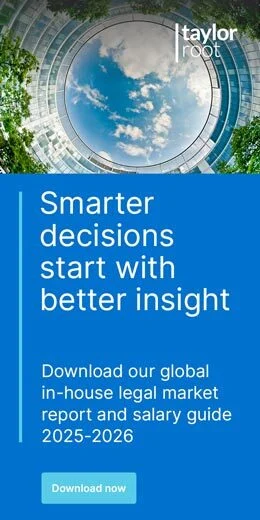Why data protection needs to be more commercial
Privacy and data protection teams are under pressure. Budgets are tight, AI is expanding the risk surface and boards want more than regulatory assurance. This shift is changing how organisations think about capability building and data protection recruitment, with greater emphasis on commercial impact and operational influence.
The answer is not stricter or more reactive compliance. It is adopting a commercial, outcomes-driven approach that positions data protection as part of how the business operates, not a final check before launch.
Why commercial data protection matters for businesses today
Commercial data protection means treating privacy as a driver of business performance, not solely a compliance requirement. It connects data protection to outcomes the organisation values, such as efficiency, customer trust, operational resilience and revenue enablement. Instead of focusing only on legal obligations, it emphasises the practical benefit created when privacy helps the business move faster and make better decisions.
A commercial data protection function helps organisations to:
- Reduce costly rework caused by unclear data handling or late-stage data processing
- Improve user experience by embedding privacy into product design
- Accelerate decision-making by clarifying data protection compliance expectations
- Strengthen customer relationships through strong data protection practices
- Maintain compliance with data privacy laws in new and existing markets
- Manage data transfers, third-party risk and cybersecurity exposure
- Maintain operational resilience against cyberattacks and non-compliance penalties
Organisations are collecting more personal data, processing more sensitive information and relying on AI-enabled systems that increase both risk and opportunity. At the same time, regulatory expectations continue to intensify across global markets, including under frameworks such as the General Data Protection Regulation, the Data Protection Act, the California Consumer Privacy Act and broader data privacy laws.
Some assume that commercial privacy risks weakening standards because it focuses on speed and efficiency. In practice, it strengthens them by making regulatory requirements easier for teams to follow and embedding good data protection into everyday delivery.
Speak the language of the business
Budgets follow business logic. When data protection leaders explain their impact in terms that resonate with senior stakeholders, approvals move faster.
Rather than emphasising effort, focus on measurable outcomes linked to data management, data security and operational efficiency. These might include fewer data breaches or near misses, faster product or feature releases because data protection was built in early, lower consultancy spend due to clearer internal processes or fewer escalations relating to data subject access requests and data retention. Early integration of security measures often results in shorter remediation cycles too.
Commercial visibility builds credibility. It allows the Data Protection Officer (DPO) or Head of Privacy to demonstrate how the function contributes to revenue enablement, cost control and risk reduction.
Treat privacy and data protection like a product
High-performing teams operate like product owners, not auditors. They identify their internal customers, including engineering, marketing, product and HR, and design guidance that helps those teams move faster.
This might include publishing clear playbooks on data collection, sharing and approval steps, addressing recurring bottlenecks in processing activities, simplifying guidance on GDPR compliance and other data protection regulations, or explaining when teams can share data and how to classify different types of data. Templates should be visible and easy to use across all regions, including for teams running digital campaigns or activities involving consumer data.
When colleagues understand how data protection supports their work, rather than restricts it, they can make compliant, informed decisions without slowing delivery.
Use AI governance to move closer to value creation
AI governance is one of the biggest strategic opportunities for privacy and data protection teams. AI systems process personal data, influence customer journeys and can expose sensitive data if not properly governed.
Data protection leaders should position themselves early in the AI lifecycle by joining discovery sessions, contributing to model design and procurement decisions, assessing training data and fairness, and implementing guardrails for data transfers, data quality and automated decision-making.
Teams expanding their AI capability should also consider best practices when hiring for AI governance, especially in complex or multi-market environments.
Early involvement builds trust with product and engineering teams and strengthens the business case for data protection. It brings the function closer to revenue, efficiency, innovation and long-term competitive advantage.
Design for visibility
Boards do not buy effort. They buy confidence that risks are understood and being managed. Clear visibility plays an important role in building that trust.
A concise, well-structured dashboard gives senior stakeholders the assurance they need far more effectively than lengthy policy updates. Useful metrics might include incident trends and near misses, how quickly decisions move through key data protection processes and how frequently teams rely on your frameworks and templates. You can also highlight improvements in data retention, reduced reliance on external partners and progress in meeting legal requirements across relevant jurisdictions.
These insights help stakeholders understand not only what the data protection team is doing, but the difference that work is making.
Present headcount budgets creatively
Executives working across regional markets respond best to structured choices tied to timelines and expected outcomes. Options might include contractor or FTC support to clear an operational backlog, a permanent hire to stabilise governance and strengthen long-term compliance, or a consultancy pod for complex or cross-border programmes, including AI-related work.
For teams at an earlier stage of maturity, understanding how to make your first data protection hire can clarify which skills to invest in first.
When presenting these options, explain the cost, expected impact, level of risk reduction and the value each option could deliver over the next 90 to 180 days. This helps leaders compare their choices and turns the conversation into a structured decision rather than an open-ended budget request.
Visibility drives careers
As the data protection function becomes more commercially embedded, the people within it naturally become more visible. When data protection leaders demonstrate how strong data protection measures improve product delivery, reduce cost and build trust with customers, they gain influence across the organisation.
This visibility supports broader remits, investment in new tools and capabilities and stronger cross-functional partnerships. It also creates clearer pathways into senior data protection, governance or risk roles.
Across global markets, boards and executive teams are increasingly asking the same question: “
Show us how data protection protects value, and how it enables it.”
Commercial data protection teams are well positioned to answer that.
Example roadmap
This plan offers a simple framework for privacy leaders who want to strengthen the commercial maturity of their function. It is not a strict template but a guide that can be adapted to different team sizes, structures and levels of maturity. By following these steps, leaders can build capability, improve visibility and create a clearer case for long-term investment.
First 90 days
- Publish a one-page operating model to clarify scope and ways of working
- Introduce a light, repeatable AI governance pattern
- Fix the top rework items that are slowing collaboration or causing non-compliance
180 days
- Standardise core playbooks and begin tracking adoption
- Measure decision speed across key privacy workflows
- Develop a headcount case with two or three clear investment options
12 months
- Demonstrate reduced risk exposure and more consistent decision-making
- Show how privacy has supported innovation, delivery or customer experience
- Reinvest part of the time or cost savings into the next tool or hire
If you are growing your data protection or AI governance team, our specialist recruiters can advise on market conditions, talent availability and hiring strategy across multiple jurisdictions.




